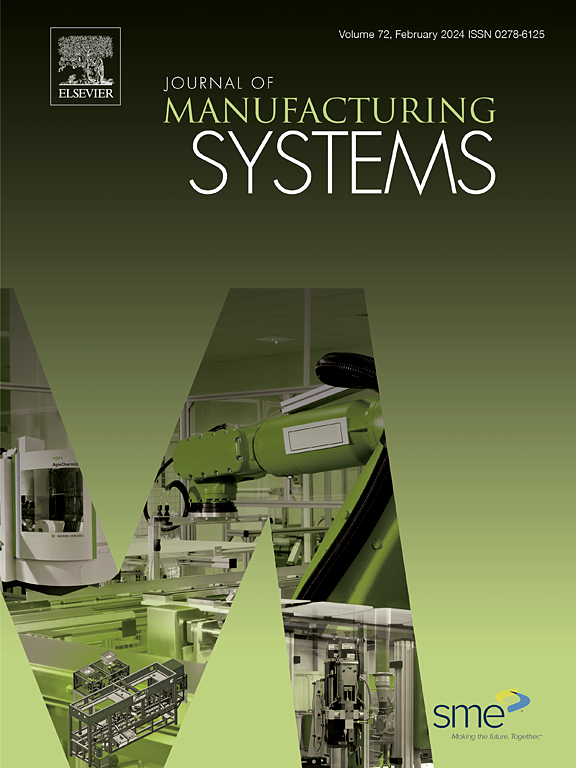Development of intelligent system to consider worker's comfortable work duration in assembly line work scheduling
IF 12.2
1区 工程技术
Q1 ENGINEERING, INDUSTRIAL
引用次数: 0
Abstract
The Fifth Industrial Revolution, or Industry 5.0, is a way to bring collaboration between human expertise and intelligent machines in making customized products, where humans guide the intelligent machines and machines to support the human. The fundamental purpose of Industry 5.0 is for human well-being in intelligent manufacturing. This research aims to prevent the assembly line workforce from physiological work stress using an intelligent work scheduling system and support assembly line managers by avoiding worker work rotations during assembly time. The worker’s comfortable work duration time (WCWDT) is proposed through this work to be considered during the assembly worker’s work scheduling. A knowledge-based intelligent system (KBIS) is proposed to make the worker’s work scheduling by considering the WCWDT. The knowledge of the worker’s WCWDT is learned with a learning mechanism from the historical data of the worker’s WCWDT. The intelligent algorithm selects the workers from the available workforce and assigns assembly work by considering their WCWDT. Industrial Internet of Things (IIoT) and Assembly line worker assignment and balancing problem (ALWABP) frameworks are adapted for workers’ WCWDT data acquisition and worker selection, respectively. Moreover, the proposed KBIS is smart enough to prioritize the aged workers from the available workforce. Finally, a use-case illustrative example is discussed to describe the scope of this research for a multi-model assembly line.
装配线调度中考虑工人舒适工作时间的智能系统的开发
第五次产业革命,即工业5.0,是人类引导智能机器,机器支持人类,使人类的专业知识和智能机器协同生产定制产品的方式。工业5.0的根本目的是为了智能制造中的人类福祉。本研究旨在使用智能工作调度系统来防止装配线劳动力的生理工作压力,并通过避免工人在装配时间内的工作轮换来支持装配线经理。工人的舒适工作时间(WCWDT)是通过这项工作提出的,以考虑装配工人的工作调度。提出了一种基于知识的智能系统(KBIS),通过考虑WCWDT对工人进行工作调度。工人WCWDT的知识是通过一种学习机制从工人WCWDT的历史数据中学习的。该智能算法从可用劳动力中选择工人,并根据工人的WCWDT分配装配工作。工业物联网(IIoT)和装配线工人分配和平衡问题(ALWABP)框架分别适用于工人的WCWDT数据采集和工人选择。此外,拟议中的KBIS很聪明,可以从现有劳动力中优先考虑老年工人。最后,讨论了一个用例说明性示例,以描述本研究的多模型装配线的范围。
本文章由计算机程序翻译,如有差异,请以英文原文为准。
求助全文
约1分钟内获得全文
求助全文
来源期刊

Journal of Manufacturing Systems
工程技术-工程:工业
CiteScore
23.30
自引率
13.20%
发文量
216
审稿时长
25 days
期刊介绍:
The Journal of Manufacturing Systems is dedicated to showcasing cutting-edge fundamental and applied research in manufacturing at the systems level. Encompassing products, equipment, people, information, control, and support functions, manufacturing systems play a pivotal role in the economical and competitive development, production, delivery, and total lifecycle of products, meeting market and societal needs.
With a commitment to publishing archival scholarly literature, the journal strives to advance the state of the art in manufacturing systems and foster innovation in crafting efficient, robust, and sustainable manufacturing systems. The focus extends from equipment-level considerations to the broader scope of the extended enterprise. The Journal welcomes research addressing challenges across various scales, including nano, micro, and macro-scale manufacturing, and spanning diverse sectors such as aerospace, automotive, energy, and medical device manufacturing.
 求助内容:
求助内容: 应助结果提醒方式:
应助结果提醒方式:


